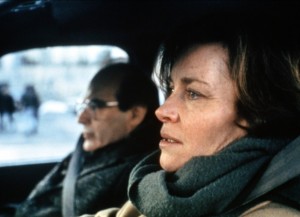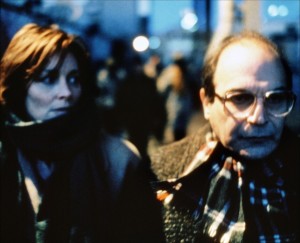Conversations conducted for Movie Mutations and Abbas Kiarostami (both 2003). — J.R.

Open Spaces in Iran and Africa:
Conversations with Abbas Kiarostami
by Jonathan Rosenbaum and Mehrnaz Saeed-Vafa
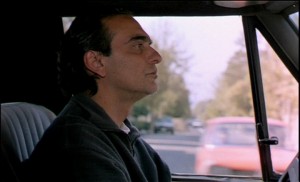
1. Taste of Cherry: spring 1998 (Chicago)
The hero of Abbas Kiarostami’s Taste of Cherry is a 50ish man named Mr. Badii contemplating suicide for unstated reasons, driving around the hilly Tehran outskirts in search of someone who will bury him if he succeeds — he plans to swallow sleeping pills — and retrieve him from the hole in the ground he has selected if he fails. Over the course of one afternoon, he picks up three passengers and asks each of them to perform this task in exchange for money — a young Kurdish soldier stationed nearby, an Afghan seminarian who is somewhat older, and a Turkish taxidermist who is older than he is. The soldier runs away in fright, the seminarian tries to persuade him not to kill himself, and the taxidermist, who also tries to change his mind, reluctantly agrees, needing the money to help take care of his sick child. The terrain Badii’s Range Rover traverses repeatedly, in circular fashion, is mainly parched, dusty, and spotted with ugly construction sites and noisy bulldozers, though the site he’s selected for his burial is relatively quiet, pristine, and uninhabited. Read more
Commissioned by BFI Video for an April 2015 release. — J.R.

Charlie Chaplin, the late Gilbert Adair liked to assert, doesn’t simply belong to film history; he belongs to history. And the same might be said for Roberto Rossellini’s first major feature, Roma città aperta. Even though it’s routinely regarded as a landmark in film history — the film that decisively put Italian Neorealism on the global map — one could argue that its lasting importance owes far more to the major role it played in humanizing the Italian population for the rest of the world after it emerged from over two decades of Fascist rule under Benito Mussolini.
We don’t hear much about that Fascist rule in Rome Open City, an omission that entails a historical simplification, albeit an understandable as well as an expedient one — not so much an expression of “first things first” as an expression of “second things first,” viewed by most audiences around the world from the vantage point of the war’s end. A project that was first conceived in August 1944, only two months after the Allies had forced the Nazis out of Rome, the film was driven primarily by a desire to expose the brutalities and indignities suffered by Romans under the German occupation as well as the discovery of a common purpose between the Communist and Catholic partisans who had opposed it. Read more
I can’t recall when this was written or what occasioned it (apart from the initial reviews of Eyes Wide Shut when it opened in 1999). — J.R.
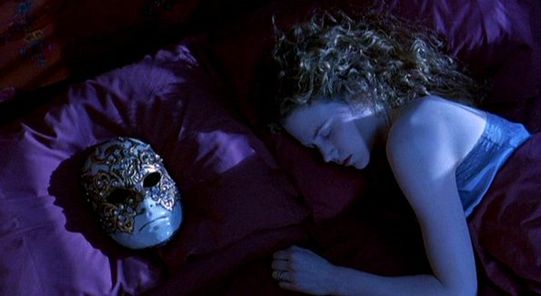
Much of the negative critical response to Eyes Wide Shut came from indignant New Yorkers who felt their city had been misrepresented — worst of all, by a native of the Bronx and onetime Manhattan resident who had dared to expatriate himself. “It’s difficult to make a movie about a city you last set foot in 35 years ago,” J. Hoberman wrote in the Village Voice, sidestepping the hypothesis that Kubrick’s last film might be about something else — some elusive, shifting city of the mind, perhaps, as shared by the fearful dreams and imaginations of a married couple. Similarly, Stuart Klawans’ complaint in The Nation that he couldn’t buy “a Village jazz club with a tuxedoed headwaiter and a last set ending at midnight” overlooks the possibility that Kubrick couldn’t either, any more than he could believe in an intersection in that same Village of Miller and Wren — two nonexistent streets even when he lived in the city.
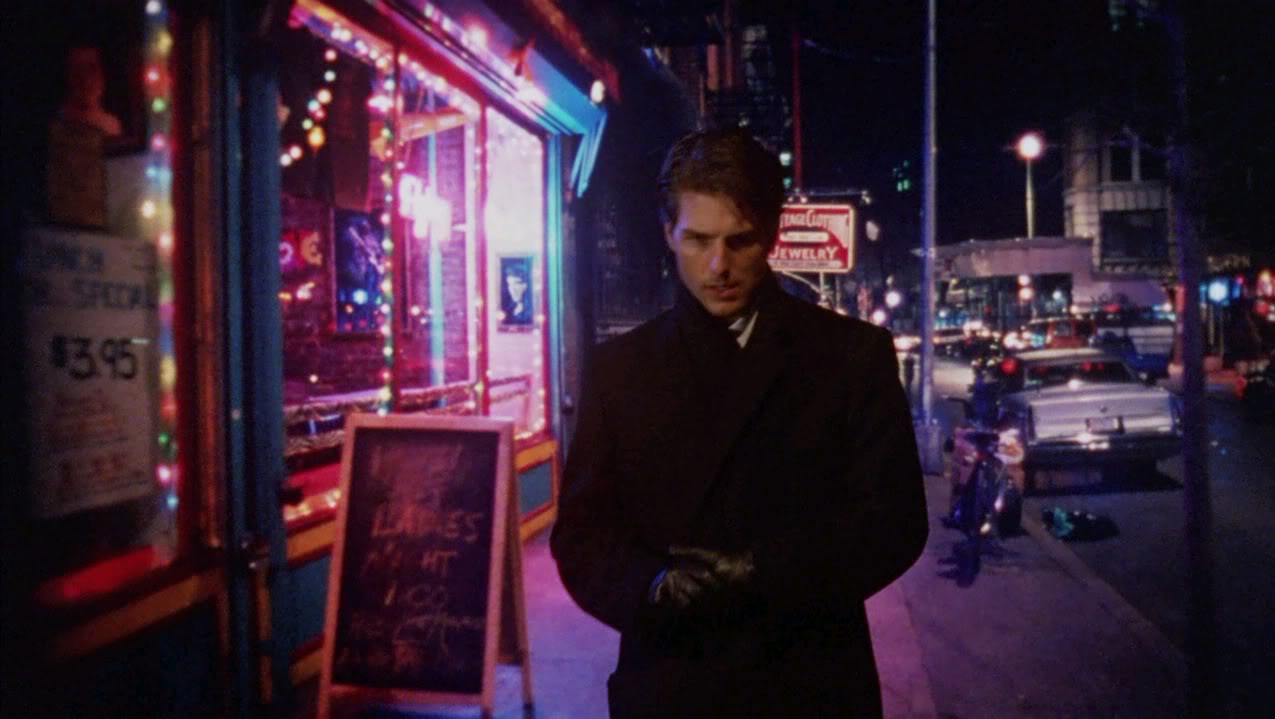

The film is full of such “off” details, and not simply because all of it was shot in an English studio. Read more
From the Chicago Reader, January 10, 1992. — J.R.

THE FILMS OF MIKE LEIGH
Among the buzzwords Marshall McLuhan coined in the 60s, “global village” has always seemed one of the more dubious. The naive notion that TV brings the whole world to our doorsteps — and presumably our doorsteps to the rest of the world — seems founded on assumptions that don’t bear close scrutiny. What do we mean by “the world,” for instance? And what do we mean by TV? TV may afford us some touristic glimpses of elsewhere, along with all the usual ideological baggage of the tourist, but when it comes to closer and better understandings of foreign cultures, I suspect TV may do more harm than good by fostering complacent illusions of knowledge: images wrapped in tidy American sound bites for easy consumption, postage-stamp peeks into worlds often defined in part by what we still don’t know.
What TV seldom offers us — unless we understand other languages and possess satellite dishes — is the rare privilege of overhearing other cultures talk to themselves, experiencing them from within rather than on our terms. To be on the inside looking out offers a different kind of knowledge, attained more by osmosis and intuition than by simplification, translation, or exegesis. Read more
This is the pre-edited version of a review published in its post-edited form elsewhere on this web site, as well as in the March 25, 2005 issue of the Chicago Reader. — J.R.
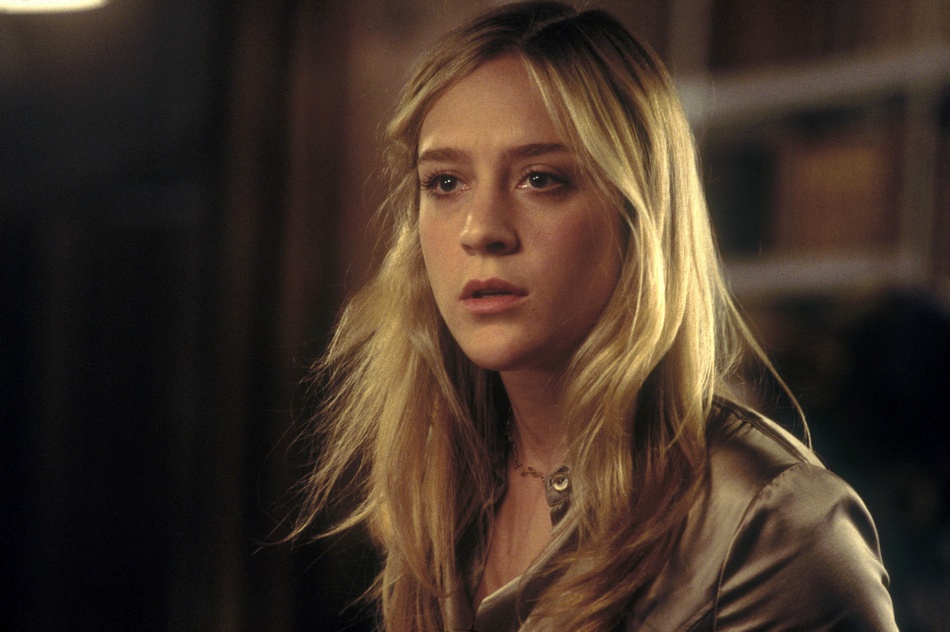
MELINDA AND MELINDA*
DIRECTED AND WRITTEN BY WOODY ALLEN WITH RADHA MITCHELL, WILL FERRELL, CHLOE SEVIGNY, CHIWETEL EJIOFOR, JONNY LEE MILLER, BROOKE SMITH, WALLACE SHAWN, AND LARRY PINE
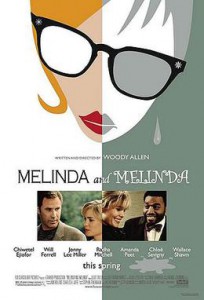
“Amongst a democratic population, all the intellectual faculties of the workman are directed to…two objects: he strives to invent methods which may enable him not only to work better, but quicker and cheaper; or, if he cannot succeed in that, to diminish the intrinsic quality of the thing he makes, without rendering it wholly unfit for the use for which it is intended. When none but the wealthy had watches, they were almost all very good ones; few are now made which are worth much, but everybody has one in his pocket. Thus the democratic principle not only tends to direct the mind to the useful arts, but it induces the artisan to produce with great rapidity many imperfect commodities, and the consumer to content himself with these commodities.”
— Alexis de Tocqueville, Democracy in America (1835)
De Tocqueville’s 170-year-old account of why Americans often blanch at intellectual abstraction and art-for-art’s-sake — and prefer accessibility over complexity when it comes to both thought and art — still seems pretty up to date. Read more
From the Chicago Reader (November 6, 1992). — J.R.
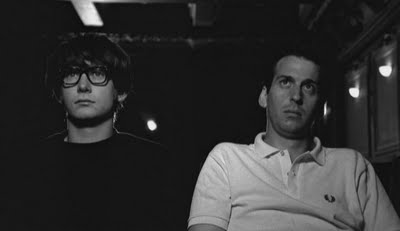
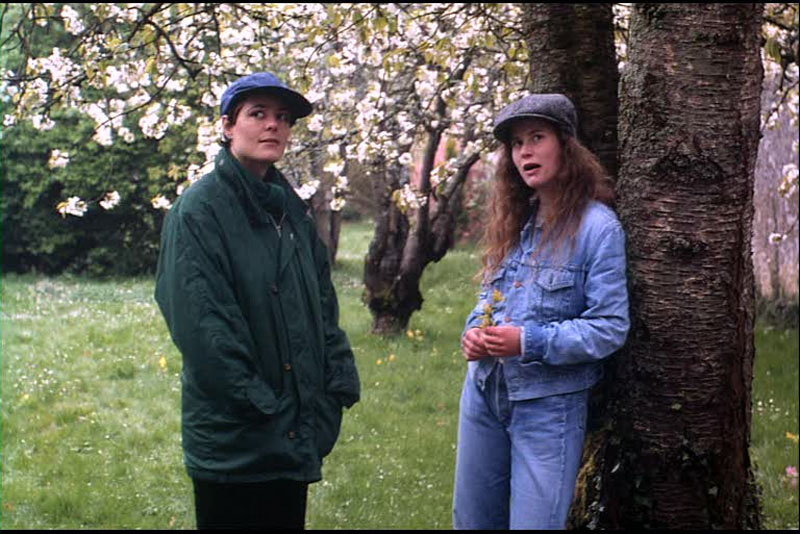
THE HOURS AND TIMES
*** (A must-see)
Directed and written by Christopher Munch
With David Angus, Ian Hart, Stephanie Pack, Robin McDonald, Sergio Moreno, and Unity Grimwood.
A TALE OF SPRINGTIME
** (Worth seeing)
Directed and written by Eric Rohmer
With Anne Teyssère, Hugues Quester, Florence Darel, Eloise Bennett, and Sophie Robin.
It’s easy enough to understand why gay and lesbian film festivals exist, especially at this juncture in history, but I can’t say I’m happy about what they do to classifying films. After all, we don’t have festivals devoted to heterosexuals or dead white men or Catholics or intellectuals or Republicans or Democrats, and I sincerely doubt that any good film should be categorized in so parochial a fashion.
By the time this review appears, we’ll probably have elected a president — our first — who professes to consider gays and lesbians part of the American mainstream, not a “special” category. This fact alone prompts some consideration of what it means to perpetuate such categories, in a film festival or in a review.
Though it’s natural for an oppressed minority to band together — for consciousness raising, among other reasons — the meaning of such events to the public at large is something else. Read more
From the Chicago Reader (September 26, 1997). — J.R.
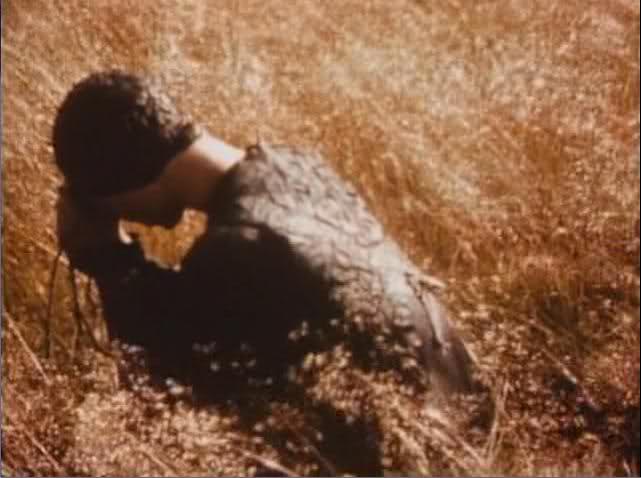
Medea
Rating *** A must see
Directed by Lars von Trier
Written by Carl Dreyer, Preben Thomsen, and von Trier
With Kirsten Olesen, Udo Kier, Henning Jensen, Solbjaig Hojfeldt, and Prehen Lerdorff Rye.
Sunday
Rating *** A must see
Directed by Jonathan Nossiter
Written by James Lasdun and Nossiter
With David Suchet, Lisa Harrow, Jared Harris, Larry Pine, and Joe Grifasi.
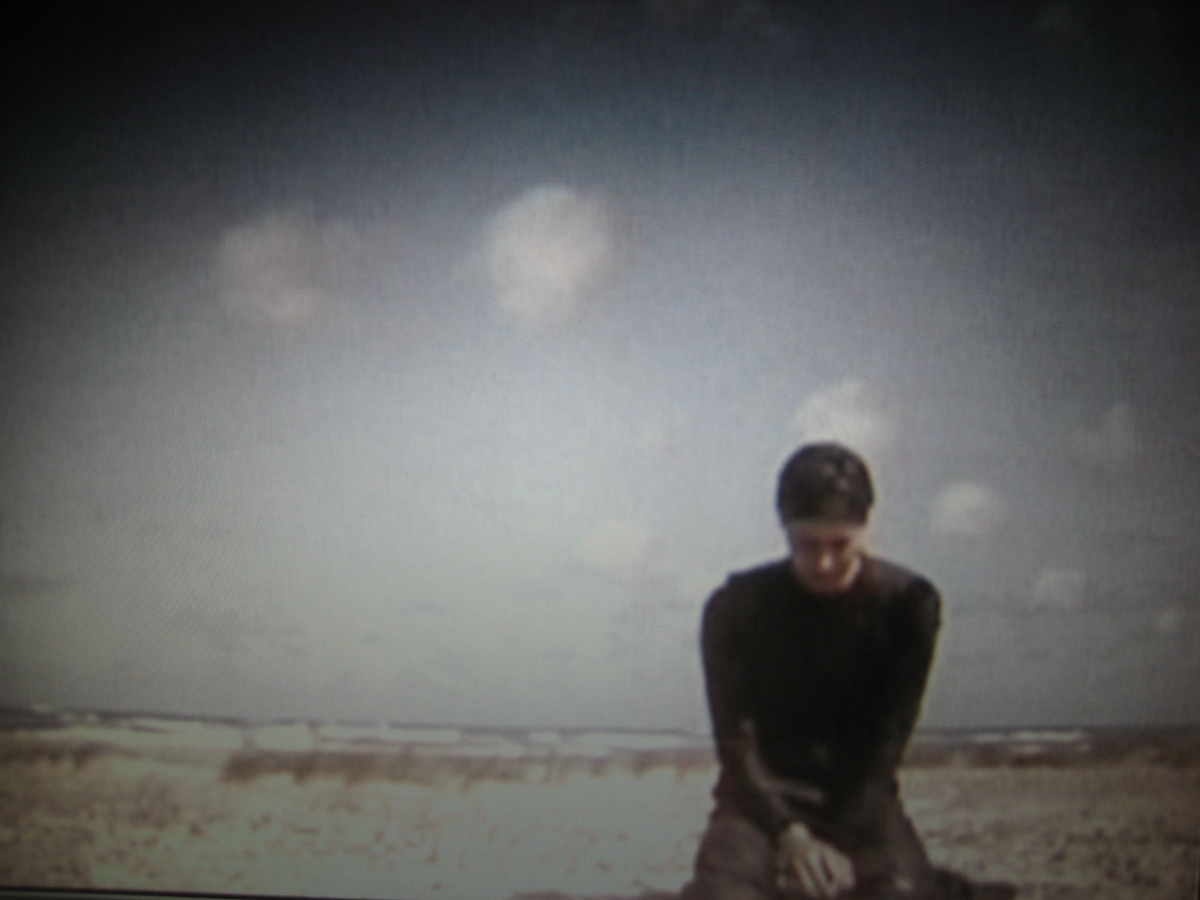
It’s been disconcerting to read, over the past several weeks, of no fewer than four Hollywood projects in the works that purport to be by and/or about Orson Welles. Three of these are based on Welles scripts that he never found the money to produce: The Big Brass Ring (an original with a contemporary setting), The Dreamers (an adaptation of two Isak Dinesen stories), and The Cradle Will Rock (an autobiographical script set in the 30s). Yet all have been extensively rewritten, and the fourth — as recently reported by Todd McCarthy in Daily Variety — is a series of whole-cloth inventions about the making of Citizen Kane, presumably with a few facts thrown in, called RKO 281, written by Chicago playwright John Logan.
Why is all this money, effort, and media attention being expended on “celebrating” Welles when nobody is showing the slightest interest in making available unseen Welles features like Don Quixote and The Other Side of the Wind? Read more
Written for a booklet distributed at the 2018 Venice International Film Festival. — J.R.
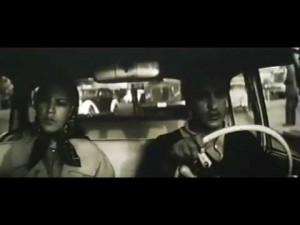
Most people reading these words have likely heard about the Iranian New Wave, which conjures up such names as Kiarostami, Makhmalbaf, and Panahi. But until recently, Westerners who have heard about the first Iranian New Wave, whose names include Farrokhzad, Golestan, Kimiavi, and Saless, have been few and far between. Apart from the belated availability in the West of Forough Farrokhzad’s 1962 short film The House is Black, this watershed prerevolution movement in Iranian cinema has almost been lost to history due to the abrupt European exiles of many of its other major artists — Ebrahim Golestan to England, Parviz Kimiavi to France, and Sohrab Shahid Saless to Germany. (Bahram Beizai, Dariush Mehrjui, and Amir Naderi are among the few filmmakers who might be stylistically associated with both waves, but given how seldom their own prerevolution films are seen nowadays, apart from Mehrjui’s The Cow, it’s difficult to say much about them.) Arguably even more innovative as well as more modernist than the second New Wave, and virtually contemporaneous with the French New Wave, Farrokhzad’s The House is Black (1962), Golestan’s Brick and Mirror (1963-64), Kimiavi’s The Mongols (1973), and Saless’ A Simple Event (1974) are masterworks that continue to speak to the present like few other films. Read more
An essay written for Toronto’s Cinematheque Ontario program guide (February 2007). –- J.R.

For better and for worse, and principally the latter, Jacques Rivette has been singled out as the former Cahiers du Cinema film critic who makes the least commercial films, as well as the longest ones. But for the record, the films of the always-neglected Luc Moullet [screened in Cinematheque Ontario’s Spring 2006 season –- ed.] are generally less commercial than those of Rivette. And even what we mean when we say “longest films” is open to some debate. (After all, the over twelve-hour OUT 1: NOLI ME TANGERE was conceived as a TV serial, and Jean-Luc Godard’s own first TV series, made a few years later, was just as long.)
The problem with such caricatures is they generally function as excuses for why some spectators won’t deal with Rivette’s films rather than as viable descriptions of what they offer. Yes, his features tend to be long and they work with duration. Furthermore, when two versions have been made of some of them –- unauthorized in the case of L’AMOUR FOU, authorized in the cases of L’AMOUR PAR TERRE and LA BELLE NOISEUSE/ DIVERTIMENTO – the longer version is almost always superior. Read more
From the Chicago Reader (January 10, 2003), where it was printed under the title “Against the Tide”. — J.R.

While putting together a collection of my film pieces for an upcoming book I included an appendix listing my 1,000 favorite films and videos made between 1895 and the present — features and shorts, live action and animation, narrative and experimental. The point was to cite not the works I consider the most important historically but the ones that still provide me with the most pleasure and edification.
This took more work than anticipated because I didn’t have a surefire method of recalling all the possible candidates. I worried about the inevitable oversights, including even ones from 2002. I also worried that I’d wind up weighting the list with more old than recent films — a fear that proved to be mainly groundless. The year between 1924 and 2002 for which I listed the fewest titles — five — was 1937. Four other years — 1926, 1939, 1942, and 1945 — yielded only six apiece. The peak year was 1955, with 21 titles. Generally speaking, there was a steady rise through the 50s, a decline in the 60s, then a leveling off: 17 items in the teens, 72 in the 20s, 95 in the 30s, 103 in the 40s, 160 in the 50s, 133 in the 60s, 130 in the 70s, 129 in the 80s, and 125 in the 90s. Read more
This appeared in the November 6, 1998 issue of the Chicago Reader. Reseeing Pleasantville on DVD, I continued to find its diverse perceptions and confusions equally fascinating. On his audio commentary, producer-director-writer Gary Ross alludes to his childhood as the son of an activist screenwriter who was blacklisted, and part of what’s so intriguing about the film is the way its own theme of innocence crossed with sophistication is matched at times by its own multiple forms of ideological doublethink. Ross’s ongoing and seemingly untroubled assumption, for instance, that black and white film is innately artificial and stylized whereas color film is innately “realistic” makes me wonder how he can perceive MGM Technicolor of the 50s as being closer to reality (and thus presumably further away from fantasy) than all the black and white cinematography from the same period — or whether, for that matter, he can even distinguish sufficiently between the alleged “realism” of the contemporary color sections of this film and the subsequent expressionism of the hallucinogenic colors impinging on a 50s sitcom’s black and white to confidently declare that both of these kinds of color are automatically and unproblematically superior to black and white in representing reality accurately. Read more
Reposted to mourn the death in 2015 of a titan, at age 106. From the July-August 2008 Film Comment, with the subhead “Negotiating the singular career of Portuguese master Manoel de Oliveira on the eve of his 100th birthday “. — J.R.
The cinema isn’t easy
Because life is complicated
And art indefinable.
Making life indefinable
And art
complicated.
— Manoel de Oliveira, “Cinematographic Poem,” 1986 (translated from the Portuguese)
Since this century has taught us, and continues to teach us, that human beings can learn to live under the most brutalized and theoretically intolerable conditions, it is not easy to grasp the extent of the, unfortunately accelerating, return to what our 19th-century ancestors would have called the standards of barbarism.
— Eric Hobsbawm, The Age of Extremes: A History of the World, 1914-1991

To insist that all great filmmakers contain multitudes is to risk a counter-response — that the same might equally be said of the not-so-great. Just as much labor can be expended on bad work as on good, and this applies to the labor of viewers and filmmakers alike. Read more
From the August 11, 2000 Chicago Reader. — J.R.

Hollow Man
Rating *** A must see
Directed by Paul Verhoeven
Written by Andrew Marlowe
With Elisabeth Shue, Kevin Bacon, Josh Brolin, Kim Dickens, Greg Grunberg, Joey Slotnick, Mary Randle, and William Devane.
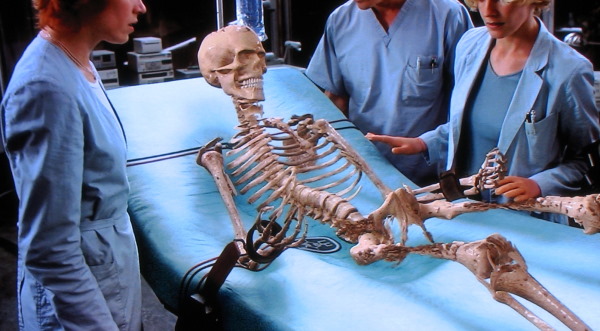
Apart from Space Cowboys, Clint Eastwood’s enjoyably auteurist swan song, Paul Verhoeven’s latest feature, Hollow Man, was the only summer Hollywood release I’d been looking forward to. For one thing, I’d hoped it would give me an opportunity to reassess his previous works, most of which I now think I underestimated when they were released.
I was pretty hospitable to Total Recall (1990), but I awarded a black dot to Basic Instinct (1992), mainly because I was incensed about the calculations of Joe Eszterhas’s $3 million script (I’m leaving aside Verhoeven’s Dutch movies because the only one I’ve seen is The 4th Man). I declined to review Showgirls (1995) at length, noting somewhat puritanically toward the end of my capsule: “I suppose the overall theory is that male spectators will tolerate any amount of stupidity and unpleasantness for the sake of acres of tits and ass, but you’ve got to hand it to the filmmakers for putting such a theory to the ultimate test: if anyone emerges from this with a smile on his face he must hate women as much as this movie does.” Read more
From Monthly Film Bulletin, January 1977, Vol. 44, No. 516. Both this film and Mekas’s earlier diary film Walden (1969) have been released together on a Blu-Ray from Kino Lorber. –- J.R.


Diaries, Notes & Sketches — Volume 1, Reels 1-6: Lost Lost Lost
U.S.A. ,1975
Director: Jonas Mekas

Dist–Artificial Eye. p.c /p/sc/ph–Jonas Mekas. addit. ph–Charles Levine, David Brooks, Peter Beard, Ken Jacobs. Part in colour. ed–Jonas Mekas. m/songs–including piano music by Chopin, “Abschied” by Schubert, traditional Lithuanian music, “Kiss of Fire” by Lester Allen, Robert Hill, excerpts from Wagner’s “Parsifal”,“How Deep Is the Ocean” by Irving Berlin, music by Lucia Dlugoszewski. sd/narrator–Jonas Mekas. with–(Reels 1-6) Jonas Mekas, Adolfas Mekas; (Reel 2) Prof. Pakstas, Juozas Tysliava, Stepas Kairys, Zadeikis, George Maciunas and family, Faustas Kirsa, Aleksandra Kasuba, Vytautas Kasuba, Vladas Jakubenas, Jeronimas Kacinskas; (Reel 3) Gideon Bachmann, Dorothy Brown, Sidney Grief, Lily Bennett, Storm De Hirsch, Louis Brigante, George Fenin and son, Arlene Croce, Edouard de Laurot, Ben Carruthers, Leo Adams, Sheldon Rochlin, Frances Starr, Robert Frank, Peter Bogdanovich, LeRoi Jones, Frank O’Hara, Allen Ginsberg, Bremser, Ged Berliner, Dick Bellamy; (Reel 4) Gretchen Weinberg, Herman Weinberg, Dick Preston, Dwight Macdonald, Shirley Clarke, Julian Beck, Judith Malina, Robert Hughes, Nat Hentoff, Norman Mailer, David Stone, Jules Feiffer, Naomi Levine, David Reynolds, Paul Goodman; (Reet 5) Peggy Stefans, Herman Weinberg, Gretchen Weinberg, Marty Greenbaum, Peter Beard, Ed Emshwiller, David Stone, Taylor Mead, Sheila Finn, P. Read more
Commissioned by MUBI for late October, 2019. — J.R.
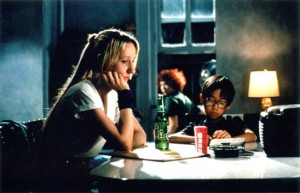
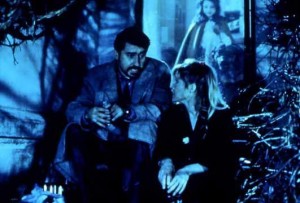
In Sara Driver’s too small yet varied filmography, her two fiction features, both poetic fantasies — Sleepwalk (1986) and When Pigs Fly (1993) — are bracketed by two other longer films, the 48-minute You Are Not I (a brilliant adaptation of a Paul Bowles story about sisters, narrated by a schizophrenic, 1981) and the 78-minute documentary Boom for Real: The Late Teenage Years of Jean-Michel Basquiat (2017). Sleepwalk stars Suzanne Fletcher, who also played the schizophrenic sister in You Are Not I; Boom For Real portrays both a highly interactive community and an eclectic artist inside it, which might also describe When Pigs Fly, a comedy inspired by Topper about a jazz pianist (Alfred Molina) living in an east coast port town populated by barflies and ghosts. Moreover, the community in Boom is basically Lower East Side Manhattan and more specifically the Bowery, the setting of Sleepwalk, as well as the New York neighborhood where Driver has lived with Jim Jarmusch for well over three decades. (She produced his first two features, and plays one of the zombies in The Dead Don’t Die.)
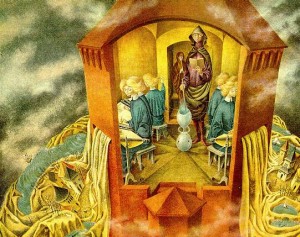
I’ve known Driver since the 1980s, and suspect that one reason why she hasn’t become better known is that she’s both a woman and a surrealist, a combination that isn’t widely recognized in this country. Read more













